RabbitMQ in Action(5): Clustering and dealing with failure
Batteries included: RabbitMQ clustering
The clustering built in to RabbitMQ was designed with two goals in mind: allowing consumers and producers to keep running in the event one Rabbit node dies, and linearly scaling messaging throughput by adding more nodes.
RabbitMQ adeptly satisfies both requirements by leveraging the Open Telecom Platform (OTP) distributed communication framework provided by Erlang.
when a Rabbit cluster node dies, the messages in queues on that node can disappear. This is because RabbitMQ doesn’t replicate the contents of
queues throughout the cluster by default. Without specific configuration, they live only on the node that owns the queue.
Architecture of a cluster
RabbitMQ is keeping track of four kinds of internal metadata:
- Queue metadata—Queue names and their properties (are they durable or autodelete?)
- Exchange metadata—The exchange’s name, the type of exchange it is, and what the properties are (durable and so on)
- Binding metadata—A simple table showing how to route messages to queues
- Vhost metadata—Namespacing and security attributes for the queues, exchanges, and bindings within a vhost
For clustering, RabbitMQ now has to keep track of a new type of metadata: cluster node location and the nodes’ relationships to the other types of metadata already being tracked.
Queues in a cluster
Only the owner node for a queue knows the full information(metadata, state, contents) about that queue.
All of the non-owner nodes only know the queue’s metadata and a pointer to the node where the queue actually lives.
when a cluster node dies, that node’s queues and associated bindings disappear. Consumers attached to those queues lose their subscriptions, and any new messages that would’ve matched that queue’s bindings become black-holed.
You can have your consumers reconnect to the cluster and recreate the queues, only if the queues weren’t originally marked durable.
If the queues being re-created were marked as durable, redeclaring them from another node will get you an ugly 404 NOT_FOUND error.
The only way to get that specific queue name back into the cluster is to actually restore the failed node.
if the queues your consumers try to re-create are not durable, the redeclarations will succeed and you’re ready to rebind them and keep trucking.
Distributing exchanges
unlike queues which get their own process, exchanges are just a name and a list of queue bindings.
When you publish a message “into” an exchange, what really happens is the channel you’re connected to compares the routing key on the message to the list of bindings for that exchange, and then routes it.
an exchange is simply a lookup table rather than the actual router of messages
when you create a new exchange, all RabbitMQ has to do is add that lookup table to all of the nodes in the cluster. Every channel on every node then has access to the new exchange.
So where the full information about a queue is by default on a single node in the cluster, every node in the cluster has all of the information about every exchange.
what happens to messages that have been published into a channel but haven’t finished routing yet when the node fails?
The basic.publish AMQP command doesn’t return the status of the message.
The solution is to use an AMQP transaction, which blocks until the message is routed to a queue, or to use publisher confirms to keep track of which messages are still unconfirmed when the connection to a node dies.
Am I RAM or a disk?
Every RabbitMQ node, whether it’s a single node system or a part of a larger cluster, is either a RAM node or a disk node.
A RAM node stores all of the metadata defining the queues, exchanges, bindings, users, permissions, and vhosts only in RAM, whereas a disk node also saves the metadata to disk.
Single-node systems are only allowed to be disk nodes
But in a cluster, you can choose to configure some of your nodes as RAM nodes.
When you declare a queue, exchange, or binding in a cluster, the operation won’t return until all of the cluster nodes have successfully committed the metadata changes.
RabbitMQ only requires that one node in a cluster be a disk node. Every other node can be a RAM node.
Keep in mind that when nodes join or leave a cluster, they need to be able to notify at least one disk node of the change.
If you only have one disk node and that node happens to be down, your cluster can continue to route messages but you can’t do any of the following:
- Create queues
- Create exchanges
- Create bindings
- Add users
- Change permissions
- Add or remove cluster nodes
The solution is to make two disk nodes in your cluster so at least one of them is available to persist metadata changes at any given time.
The only operation all of the disk nodes need to be online for is adding or removing cluster nodes. When RAM nodes restart, they connect to the disk nodes they’re preconfigured with to download the current copy of the cluster’s metadata.
If you only tell a RAM node about one of your two disk nodes and that disk node is down when the RAM node restarts, the RAM node won’t be able to find the cluster when it reboots.
Setting up a cluster on your laptop
You’ll now have three Rabbit nodes running on your development system called rabbit, rabbit_1, and rabbit_2
Start by stopping the RabbitMQ app on the second node:
$ ./sbin/rabbitmqctl -n rabbit_1@Phantome stop_app
Stopping node rabbit_1@Phantome ...
...done.
Next, you need to reset the second node’s metadata and state to be empty:
$ ./sbin/rabbitmqctl -n rabbit_1@Phantome reset
Resetting node rabbit_1@Phantome ...
...done.
Now that you have a stopped (and empty) Rabbit app, you’re ready to join it to the first cluster node:
$ ./sbin/rabbitmqctl -n rabbit_1@Phantome cluster rabbit@Phantome \
rabbit_1@Phantome
Clustering node rabbit_1@Phantome with [rabbit@Phantome,
rabbit_1@Phantome] ...
...done.
Finally you can start the second node’s app again so it can start being a functioning member of the cluster:
$ ./sbin/rabbitmqctl -n rabbit_1@Phantome start_app
Starting node rabbit_1@Phantome ...
...
broker running
...done.
When you join a new node to a cluster, you have to list all of the disk nodes in the cluster as arguments to the cluster command.
This is how a RAM node knows where to get its initial metadata and state if it reboots. If one of the disk nodes you’re telling the new node about is itself, rabbitmqctl is smart enough to realize that you want the new node to also be a disk node.
root@OpenstackIcehouse2:~# RABBITMQ_NODE_PORT=5673 RABBITMQ_NODENAME=rabbit_1 /usr/sbin/rabbitmq-server -detached
Warning: PID file not written; -detached was passed.
root@OpenstackIcehouse2:~# RABBITMQ_NODE_PORT=5674 RABBITMQ_NODENAME=rabbit_2 /usr/sbin/rabbitmq-server -detached
Warning: PID file not written; -detached was passed.
root@OpenstackIcehouse2:~# RABBITMQ_NODE_PORT=5675 RABBITMQ_NODENAME=rabbit_3 /usr/sbin/rabbitmq-server -detached
Warning: PID file not written; -detached was passed.
root@OpenstackIcehouse2:~# rabbitmqctl -n rabbit_2@OpenstackIcehouse2 stop_app
Stopping node rabbit_2@OpenstackIcehouse2 ...
...done.
root@OpenstackIcehouse2:~# rabbitmqctl -n rabbit_2@OpenstackIcehouse2 reset
Resetting node rabbit_2@OpenstackIcehouse2 ...
...done.
root@OpenstackIcehouse2:~# rabbitmqctl -n rabbit_2@OpenstackIcehouse2 join_cluster rabbit_1@OpenstackIcehouse2
Clustering node rabbit_2@OpenstackIcehouse2 with rabbit_1@OpenstackIcehouse2 ...
...done.
root@OpenstackIcehouse2:~# rabbitmqctl -n rabbit_2@OpenstackIcehouse2 start_app
Starting node rabbit_2@OpenstackIcehouse2 ...
...done.
root@OpenstackIcehouse2:~# rabbitmqctl -n rabbit_3@OpenstackIcehouse2 stop_app
Stopping node rabbit_3@OpenstackIcehouse2 ...
...done.
root@OpenstackIcehouse2:~# rabbitmqctl -n rabbit_3@OpenstackIcehouse2 reset
Resetting node rabbit_3@OpenstackIcehouse2 ...
...done.
root@OpenstackIcehouse2:~# rabbitmqctl -n rabbit_3@OpenstackIcehouse2 join_cluster rabbit_1@OpenstackIcehouse2 --ram
Clustering node rabbit_3@OpenstackIcehouse2 with rabbit_1@OpenstackIcehouse2 ...
...done.
root@OpenstackIcehouse2:~# rabbitmqctl -n rabbit_3@OpenstackIcehouse2 start_app
Starting node rabbit_3@OpenstackIcehouse2 ...
...done.
root@OpenstackIcehouse2:~# rabbitmqctl -n rabbit_1@OpenstackIcehouse2 cluster_status
Cluster status of node rabbit_1@OpenstackIcehouse2 ...
[{nodes,[{disc,[rabbit_1@OpenstackIcehouse2,rabbit_2@OpenstackIcehouse2]},
{ram,[rabbit_3@OpenstackIcehouse2]}]},
{running_nodes,[rabbit_3@OpenstackIcehouse2,rabbit_2@OpenstackIcehouse2,
rabbit_1@OpenstackIcehouse2]},
{partitions,[]}]
...done.
Mirrored queues and preserving messages
Declaring and using mirrored queues
queue_args = {"x-ha-policy" : "all" }
channel.queue_declare(queue="hello-queue", arguments=queue_args)
When set to all, x-ha-policy tells Rabbit that you want the queue to be mirrored across all nodes in the cluster. This means that if a new node
is added to the cluster after the queue is declared, it’ll automatically begin hosting a slave copy of the queue.
https://github.com/rabbitinaction/sourcecode/tree/master/python/chapter-5
import pika, sys
credentials = pika.PlainCredentials("guest", "guest")
conn_params = pika.ConnectionParameters("localhost", 5673, '/', credentials = credentials)
conn_broker = pika.BlockingConnection(conn_params)
channel = conn_broker.channel()
channel.exchange_declare(exchange="hello-exchange", type="direct", passive=False, durable=True, auto_delete=False)
queue_args = {"x-ha-policy" : "all" }
channel.queue_declare(queue="hello-queue", arguments=queue_args)
channel.queue_bind(queue="hello-queue", exchange="hello-exchange", routing_key="hola")
def msg_consumer(channel, method, header, body):
channel.basic_ack(delivery_tag=method.delivery_tag)
if body == "quit":
channel.basic_cancel(consumer_tag="hello-consumer")
channel.stop_consuming()
else:
print body
return
channel.basic_consume( msg_consumer, queue="hello-queue", consumer_tag="hello-consumer")
channel.start_consuming()
root@OpenstackIcehouse2:~# rabbitmqctl -n rabbit_1@OpenstackIcehouse2 list_queues name pid owner_pid slave_pids synchronised_slave_pids
Listing queues ...
hello-queue <rabbit_1@OpenstackIcehouse2.1.838.0>
...done.
root@OpenstackIcehouse2:~# rabbitmqctl -n rabbit_2@OpenstackIcehouse2 list_queues name pid owner_pid slave_pids synchronised_slave_pids
Listing queues ...
hello-queue <rabbit_1@OpenstackIcehouse2.1.838.0>
...done.
root@OpenstackIcehouse2:~# rabbitmqctl -n rabbit_3@OpenstackIcehouse2 list_queues name pid owner_pid slave_pids synchronised_slave_pids
Listing queues ...
hello-queue <rabbit_1@OpenstackIcehouse2.1.838.0>
...done.
You only need to make two changes to your mirrored queue declaration to make it use a subset of nodes, instead of all the nodes in a cluster.
queue_args = {"x-ha-policy" : "nodes",
"x-ha-policy-params" : ["rabbit@Phantome"]}
channel.queue_declare(queue="hello-queue", arguments=queue_args)
Under the hood with mirrored queues
the channel publishes the message in parallel to both the master and slave copies of a mirrored queue
if you need to ensure a message isn’t lost, you can use a publisher confirmation on the message and Rabbit will notify you when all of the queues and their slave copies have safely accepted the message.
But if a mirrored queue’s master fails before the message has been routed to the slave that will be become the new master, the publisher confirmation will never arrive and you’ll know that the message may have been lost.
if the node hosting the master copy fails, all of the queue’s consumers need to reattach to start listening to the new queue master.
For consumers that were connected through the node that actually failed, this isn’t hard. Since they’ve lost their TCP connection to the node, they’ll automatically pick up the new queue master when they reattach to a new node in the cluster.
But for consumers that were attached to the mirrored queue through a node that didn’t fail, RabbitMQ will send those consumers a consumer cancellation notification telling them they’re no longer attached to the queue master.




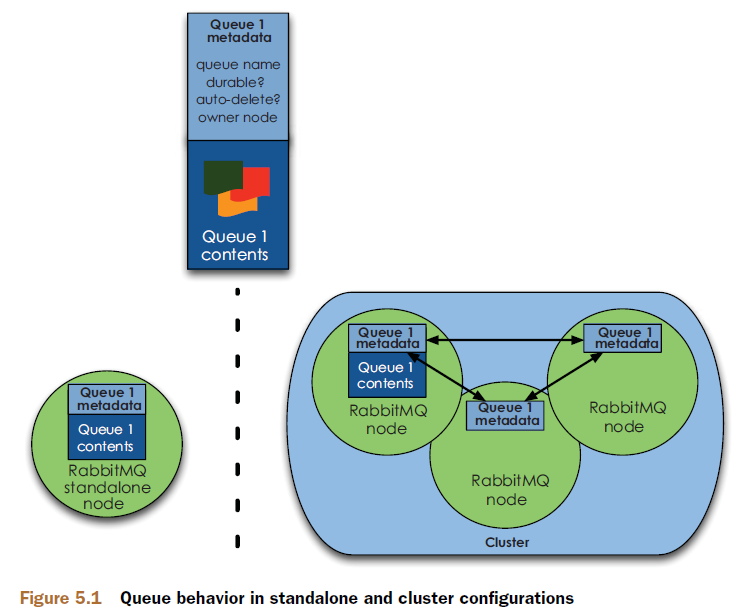
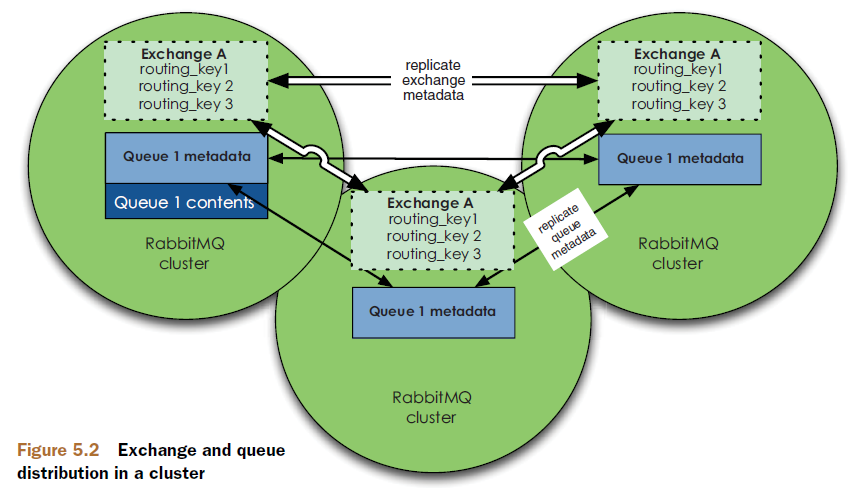
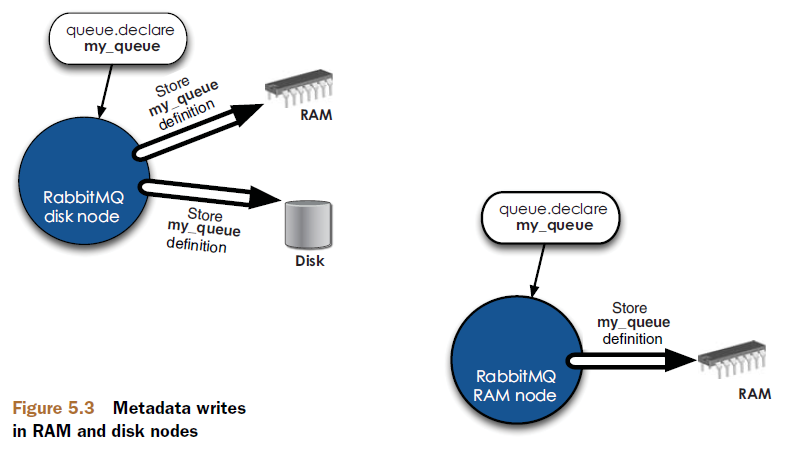
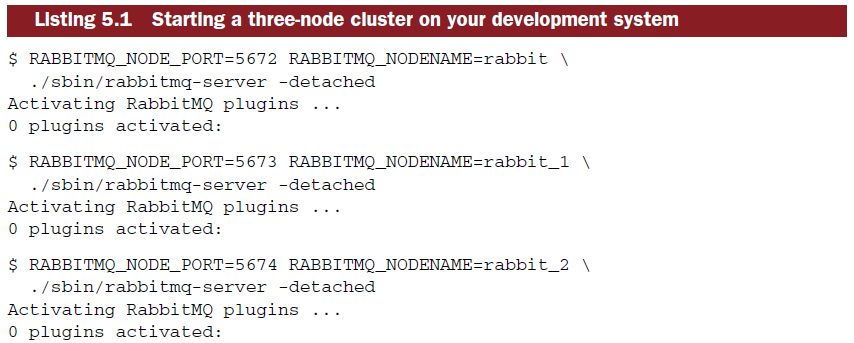
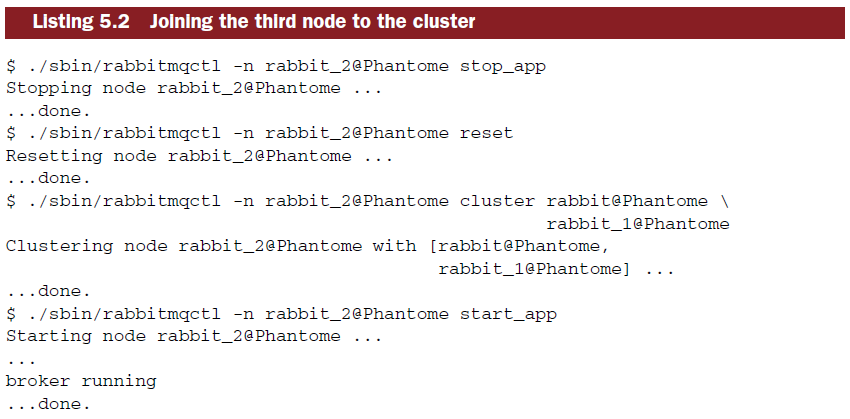
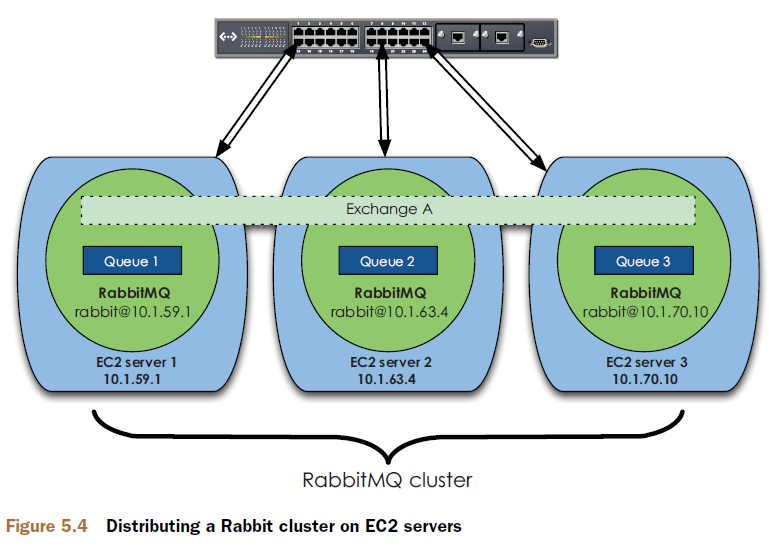
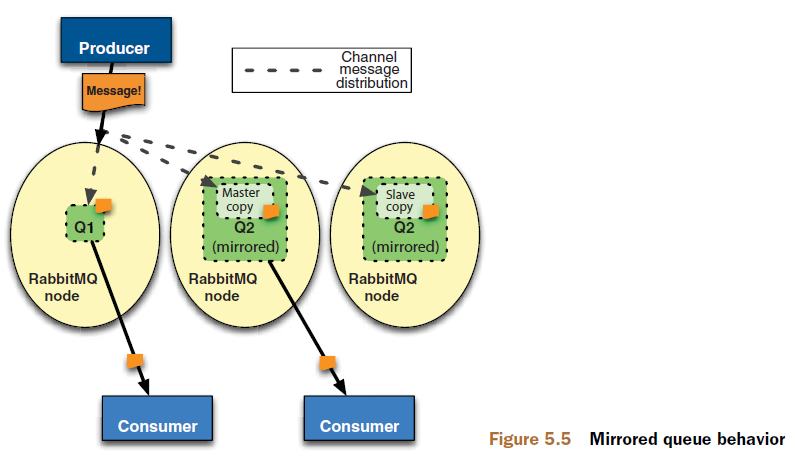

 浙公网安备 33010602011771号
浙公网安备 33010602011771号